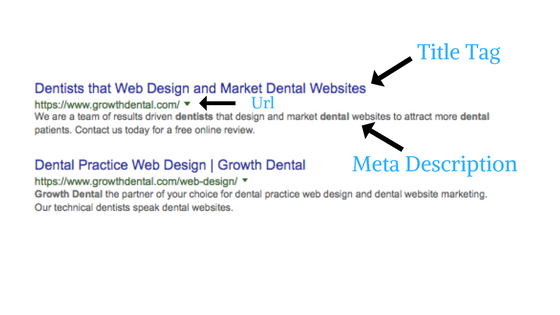7 SEO Tips To Rank Your Dental Website On The First Page Of Google
- 29th January 2018
- Advanced SEO Techniques, Mobile Responsive, Online Tools, SEO
We see so many aesthetically pleasing and beautifully created dental websites but unfortunately we hear the same question from dentists why is our website not ranking on the first page of google or why is our website not bringing in more patient enquiries?
Here are our 7 tips to rank your dental website on the first page of google:
1. Mobile Friendly Website
We are living in an era where majority of the UK population own a mobile phone. It is reported that 95% of UK households own a mobile phone in 2017. This number will rise further.
People want information at a touch of button on their mobile phones. Mobile friendly websites are created specifically for handheld devices. Below are a few examples to ensure your website is user friendly :
A) User Friendly
Ensure your website pages are easy and simple to navigate. The text is readable and the buttons are clickable. The last thing you want is your potential patients viewing a desktop site on a mobile phone or your patients need to pinch and squeeze the mobile screen to read text or click a button.
B) Mobile Friendly Test
The best way to find out if your website is mobile friendly is to enter the url of your website into googles mobile friendly test. The test will give recommendations on what to do ensure your website is mobile friendly.
2. Website Loading Speed
It is imperative that your website is optimised to load fast on mobile and desktop devices. Page and website speed is one of the ranking factors to how high you may show up on the results page of google searches. Having a slow website affects user experience. A slow website will result in fewer dental patient leads and this will have a knock on effect on your dental practice. Ensure your website is optimised by using googles page speed insights tool to see the recommendations to increase the speed of your website loading up.
3. Call to Action
The whole point of your website is to keep your patients engaged on your website and enable them to take the next step through your websites call to action features.
Examples of ‘Call to Action’ include:
A) Forms
Spur your website visitors to fill out forms through your content be it for enquiries for dental services or signing up to your blogs and newsletters. Forms should not be lengthy to fill as this may frustrate the website visitor.
B) Buttons
Call to Action buttons is a great way to get your website viewers to take action towards a goal this may be clicking icons to follow social media. It can include touching buttons to make a call or write an email or ‘request an appointment’ to your dental practice. The button should be the right colour to entice the user to click as colour psychology plays a huge role in emotion and human behaviour. The text on the button should be clear and concise to read.
4. Essential Website Pages.
One of the best ways to optimise your website to attract patients is by having a services and treatment page. Ensure your services and treatments are optimised for location, as this will benefit your local SEO and the user experience of your website visitors.
It is important that you provide all your contact details on your contact page including location, telephone, email and social media. Do not forget to include your opening times.
5. SEO
Ensure that you optimise all areas of your website including :
A) Urls
The url is the web address associated with your web page. Ensure your urls are simple and easy to navigate and understand.
B) Title Tag
Make sure that your web page has a title to describe your content. This may be a service or treatment in a desired location e.g ‘fastbraces Manchester’.
C) Meta Description
Always include a meta description that describes your service and who or what dentist will provide the service.
6. Website Footer
The purpose of a website footer is to help your potential dental patients to navigate and access further information on your dental website which they may have missed. Information on footers can include your contact details, services and treatments.
7. Blogging
You may have heard the saying ‘content is king’ for online marketing. This is so true that blogging is a great way to improve your search engine rankings through optimising your content for certain keywords associated with your dental practice and the services you offer. Uploading regular fresh content is imperative to providing value to your dental patients and ranking higher on google.
If you need further assistance with your dental website or dental marketing contact us today for a chat.
Business Development and Online Dental Leads Blogger
About Growth Dental
We are a team of dentists that are passionate about creating dental websites and helping dental practices to attract more private dental patients through results driven online marketing.
Talk to a Web Designing Dentist
We have built websites for our dental practices and have attracted private patients through online marketing without the use of external web design and marketing agencies.
Get new blog posts by email :
Recent Posts
- 7 SEO Tips To Rank Your Dental Website On The First Page Of Google 29th January 2018
- 5 Benefits Of Having Dental Live Chat On Your Website To Generate More Leads 21st September 2017
- 3 Tools That We Use For Our Dental Website Analytics 12th June 2017






